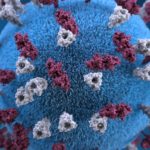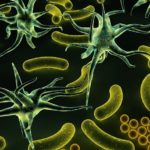What causes hyperlipidemia?
The term ‘lipid’ is used for substances with poor solubility in water. Some of the important lipids include cholesterol, triglycerides, and phospholipid. The lipids are transported in the blood by binding to apolipoproteins to form lipoproteins. The lipids perform many important functions including the formation of the cell membrane, storage, and transport forms of metabolic fuel.
Composition of lipids
Lipids consist of cholesterol and its derivatives, fatty acids, triacylglycerols, phospholipids, and apolipoproteins. The core of lipoprotein consists of neutral lipids like cholesterol esters and triacylglycerol. They have a surface coat of lipids called polar lipids made of unesterified (cholesterol, phospholipids) and apolipoproteins.
Types of lipids
Lipids are classified as per their density into chylomicrons, very low-density lipoprotein, immediate-density lipoprotein, low-density lipoprotein, and high-density lipoprotein. Synthesis of lipoproteins occurs in the intestine or liver. The clinical significance of lipids lies in circulating lipid concentrations and their relationship to atherosclerosis, coronary heart disease, stroke, and peripheral vascular disease.
Hypercholesterolemia
Cholesterol is synthesized in the liver and small intestine. On a low cholesterol diet (less than 300 mg per day), about 800 mg of cholesterol is synthesized in body. In blood, it is present as either free cholesterol or as cholesterol linoleate and cholesterol oleate. Cholesterol is excreted in bile as cholesterol or as bile salts. The rise of cholesterol is usually due to raised low density lipoproteins (LDL). Occasionally these patients have raised high-density lipoproteins (HDL). This may be due to familial primary hyperlipoproteinemia or secondary to other disorders like hypothyroidism, nephrotic syndrome, diabetes mellitus, and biliary obstruction. In familial hyperlipidemia, there is an increase in apolipoprotein-B production which results in an increase in serum LDL. Serum VLDL and triacylglycerol levels are also raised in one-third of these patients. Familial hypercholesterolemia is caused by a defect in the LDL receptor which causes a reduced LDL uptake by liver cells. This results in raised LDL and cholesterol levels.
Hypertriglyceridemia predominantly occurs in conditions where VLDL or chylomicron levels are raised. This is seen in cases with heavy alcohol consumption, morbid obesity, high carbohydrate diet, diabetes mellitus, kidney failure, and chronic pancreatitis. Reduced insulin levels in diabetes mellitus impair the activity of lipoprotein lipase resulting in hyperchylomicronemia.
Primary hypertriglyceridemia presents as familial hypertriglyceridemia or hyperchylomicronemia. Familial endogenous hypertriglyceridemia results from increased hepatic triacylglycerol production with increased VLDL production. It is associated with morbid obesity, diabetes, and gout. Hyperchylomicronemia occurs due to impairment of lipoprotein lipase activity. This enzymatic defect may be inherited or acquired. Metabolic syndrome is due to dyslipoproteinemia, which is associated with accelerated atherosclerosis. The other features of this syndrome include visceral obesity, dyslipidemia, insulin resistance, hypertension, and a proinflammatory and prothrombotic state.
Treatment of hyperlipidemia
The treatment of hyperlipidemia mainly involves the control of risk factors for atherosclerotic heart disease. It involves major lifestyle changes like stopping smoking, regular exercise, and diet modification. Hypertension is treated to keep the blood pressure within normal limits.
Diet is the cornerstone of the treatment of hyperlipidemia. A good dietician should be involved. Excessive intake of calories should be cut down by reducing cholesterol and saturated fats in the diet. The benefits of dietary modification are apparent after 6 to 8 weeks. Fresh fruit, vegetables, and fiber are encouraged. Soluble fiber such as oat bran and guar lower cholesterol levels, perhaps by reducing bile acid absorption. Mild alcohol ingestion increases HDL cholesterol but an excess intake can precipitate hypertriglyceridemia. Dietary modification may not be successful in some primary hyperlipidemias due to uncontrollable errors in metabolism.
Hyperlipidemia is a risk factor for atherosclerosis, hypertension, and coronary heart disease. A sedentary lifestyle and bad dietary habits are adding to the increased morbidity and mortality of the urban population. Better awareness and medical consultation can prevent many of these adverse effects.




























